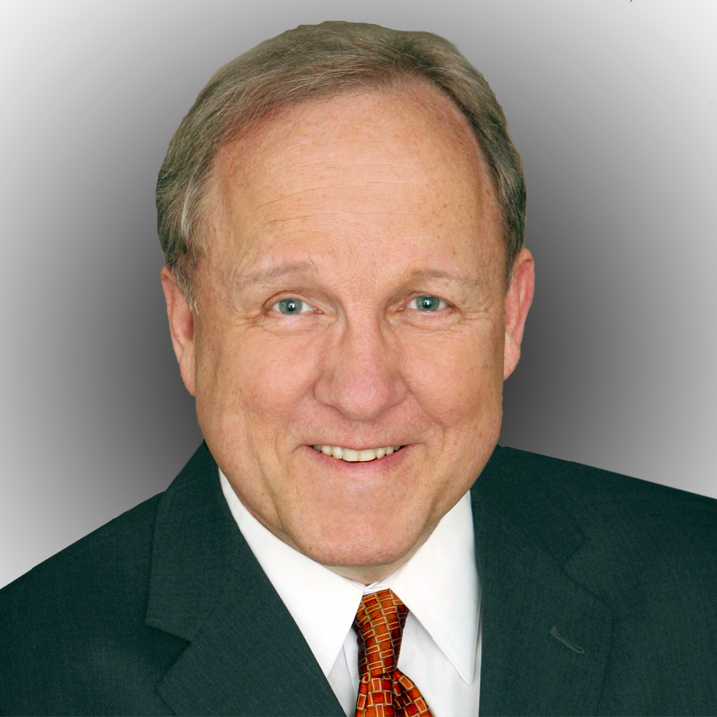
Do your goals feel like scenes from Groundhog Day?
You’re not alone. And psychologists tell us that failure with personal goals has a ripple effect: when we fail with one goal our self-confidence erodes and we may be even more prone to giving up on a subsequent goal.
So we need some coaching on how to manage this conundrum.
Maura Nevel Thomas can help. She’s an award-winning speaker, trainer, and author on productivity, attention management, and work-life balance. She’s a favorite go-to source on these topics for the Wall Street Journal, Fast Companyand Inc., and is a regular contributor to the Harvard Business Review. Her latest books are Work Without Wallsand Personal Productivity Secrets.
I talked with Maura about productivity issues that challenge all of us.
Rodger Dean Duncan: Many people make—and then abandon—resolutions around managing their time. You say a goal involving personal productivity should focus on managing attention, not managing time. Why?
Maura Thomas: We have framed our efforts around productivity and efficiency as “time management” for way too long, all the while knowing that no one can actually “manage time.” It passes, no matter what we do. We can’t slow it down or create more of it, and we all have the same amount. Therefore, “time” is not our problem. It’s distraction and misplaced attention that are interfering with our ability to achieve the results that are most significant to us. And the solution to distraction is not time management, but attention management.
In theory at least, it ispossible to manage our attention. And I believe that in an increasingly distracting world filled with technology designedto persuade us to engage with it, the ability to manage our attention is the antidote, and a critical skill to learn. Attention management is our most important defense against a world that is constantly conspiring to steal it.
Duncan:Attention Deficit Disorder (ADD) affects millions of people who struggle to focus and follow through on important activities. You suggest that ADD can sometimes be self-induced. What are the early warning signs of situational ADD?
Thomas: This is such a useful concept, coined by psychiatrist and ADD expert Dr. Edward Hallowell. The pace of business is so fast today. Communication is often instant, pushing expectations higher and higher—if “faster is better,” then “instant” must be best. Information is instantly available at our fingertips, we can receive delivery of just about anything in the same day, and we’re accustomed to lightning fast internet speeds and computer processing power. But humans are not computers and expecting our learning and processing, our accessibility, and our communication to be instant, synchronous, and always-on is a recipe for the impatience, exhaustion, burnout, and health issues that have been on the rise for at least two decades now.
The real reason this pace pushes our expectations higher is because it pushes our attention span and our patience lower and lower. I ask my audiences if they feel that their attention span is shorter than it used to be, and if they feel more impatient than they used to. And virtually everyone, everywhere responds “yes” to both questions.
Those are two signs of “situationalADD,” but the unfortunate problem is that most people don’t recognize them “early.” That’s why I’ve been using my work to sound the alarm about attention management and help people recognize how destructive this path can be if it’s not reversed. My book Attention Management: Breaking the Time Management Myth for Unrivaled Productivityis written with this specific purpose—to help people recognize how their everyday habits and environments are sabotaging their ability to achieve their significant results and to live a life of choice, rather than a life of reaction and distraction.
Attention management is the ability to control distractions, be present in your moments, maximize your focus, engage your flow, and ultimately, unleash your genius.
Duncan: In a world that seems to bombard us with endless demands on our time and attention, how can we become more proactive (less reactive) in managing our lives?
Thomas: The important difference between being proactive and reactive is the ability to make choices about what to do next instead of just constantly “reacting.” But we have so much to track and manage that it takes time and effort to stay on top of everything. Our busy lives feel like they require us to constantly “play defense,” just “blocking and tackling” the influx of information constantly bombarding us.
We need the ability to “play offense:” to plan, organize, and make thoughtful choices about what gets our attention. But because of our impatience and our tendency to always be “doing,” many people behave as if “stopping to think” and taking time to organize and manage are luxuries we can’t afford. (How many times a week do you think I hear, “I don’t have time to get organized!”?) As a result, we end up spending too much time doing “what happens to us:” answering the latest email, dealing with the constant “drop-ins,” and getting sidetracked by every new incoming communication or piece of information.
That’s why I teach a workflow management process that enables people to store, organize, and act on commitments, communication, and information according to their priorities, and prevent things from falling through the cracks. I call my methodology the Empowered Productivity™ System because it helps them regain control over their ability to achieve their significant results.
I had a follow-up call with a client who attended a training I delivered the previous week. He said it allowed him to eliminate all of his various lists, notebooks, and sticky notes, manage distractions, get his inbox to zero, and gave him the peace of mind that while he knew there was a lot to do, he had a handle on all of it—personal and professional—and he felt good about the choices he was making.
Duncan: You point out that our best thinking doesn’t come from a stressed-out brain. What are some good ways to lower our stress by controlling the mental chatter?
Thomas: Much of our “mental chatter” is items from our scatteredto-do lists popping into our head at random all day long. Most people write things down to help them remember. That’s the reason most people have lists, or reminders, scattered around their offices and homes. And it’s true that writing things down doeshelp you to remember. But there’s just too much, and relying on your brain supplemented by notebooks, sticky notes, and the occasional cocktail napkin to manage it all creates the mental burden that is really stressful. It’s important to get all of these things in one place and organize them in a way that allows you to stop “keeping track” and enables you to make progress. That’s why an important part of any workflow management system, including Empowered Productivity, is the right set of tools.
I believe all busy professionals need at least five (electronic) tools for managing the details of their lives. And most people do a good job with 3 out of the 5: a calendar, a contact manager, and place to keep notes.
But the other 2 are where people struggle. Number 4 is a good task manager, and the reason people struggle is not because they don’t have the tool (there are hundreds of apps, and task management is a part of most business software). It’s because they don’t have the methodology for using the tool. Believing that a new tool alone will make you more productive is like thinking that a new set of clubs will magically make you a PGA-level golfer.
Number 5 is email and here again everyone has software and apps to send and receive mail. But they are missing the workflow methodology to really manageit. The biggest reason many people are drowning in email is that they use their inbox as a task list. They look to their email to figure out what they need to do next. Without a good way to manage tasks and email, not only do we have the mental burden I mentioned earlier but we also have the physical burden of overflowing inboxes.
Duncan: Daydreaming in the grocery line, you say, can actually be more productive than checking email, and that such seemingly “idle” times are often “the very moments when we have mental breakthroughs.” How can an individuals create opportunities for such moments? And what can leaders do to make such moments an acceptable—even expected and celebrated—part of an organization’s culture?
Thomas: I teach about four quadrants of attention management: reactive and distracted, engaged in flow, focused and mindful, and daydreaming.
When we are daydreaming, we’re not actively controlling our thoughts, we aren’t focused on anything in particular, and we don’t have a lot of external stimulus. This is when our minds can wander and “stumble” into connections and insights that are otherwise crowded out. (For example, do you ever feel like you have your best ideas in the shower?)
In order to encourage more of these, we must recreate what I call the “in-between” momentswe used to have before the existence of smartphones: such as walking, waiting in line, or riding an elevator. Our challenge is that now in any pause of activity, we immediately pull out our phone, and engaging with email, social media, or other communication tools destroys the opportunity to daydream.
“Open office” floor plans have been gaining in popularity for at least the last five years or more, in an effort to encourage innovation, collaboration, and creativity. We now know, however, that any gains in offered by these impromptu associations are canceled out by the loss of privacy, focus, and thinking time. The good news is that it’s not really the floor plan that’s the problem, it’s the implementation. Leaders must craft the office environment with intention, and put as much emphasis on the importance of undistracted time as the open-floor plan puts on collaboration. Some ideas I wrote about in Work Without Wallsinclude soft furnishings and plants that absorb sound, some private areas in the open space and a remote work policy, so people have somewhere quiet to go when they need to get important work done.
Duncan: You define productivity as “the ability to achieve your significant results.” With so many competing priorities in the average person’s life, what’s your counsel on deciding what should really take precedence?
Thomas: The professionals I work with are busy people with busy lives, but this is by choice—they are motivated and driven and have unique gifts to bring to the world. “Time management” teaches us to “say no more often” and “do less.” But saying “no” deprives the world of those unique gifts. And because many people “have to” work, they things they “say no” to tend to also be the things that nurture and sustain them: things like hobbies, recreation, family time, and volunteer activities.
I’m passionate about my work because I believe that exhaustion is optional. I believe we can be driven and motivated and have busy and full lives, and that these things can motivate, energize, and inspire us instead of exhaust, overwhelm and stress us.
Ultimately, I believe that the pursuit of productivity answers two questions: “What kind of person do you want to be?” and “What kind of life do you want to lead?” Living those ideals—not only at work but in all parts of our lives—is what should take precedence, and the way I define peak productivity. Attention management is the path to get us there.

